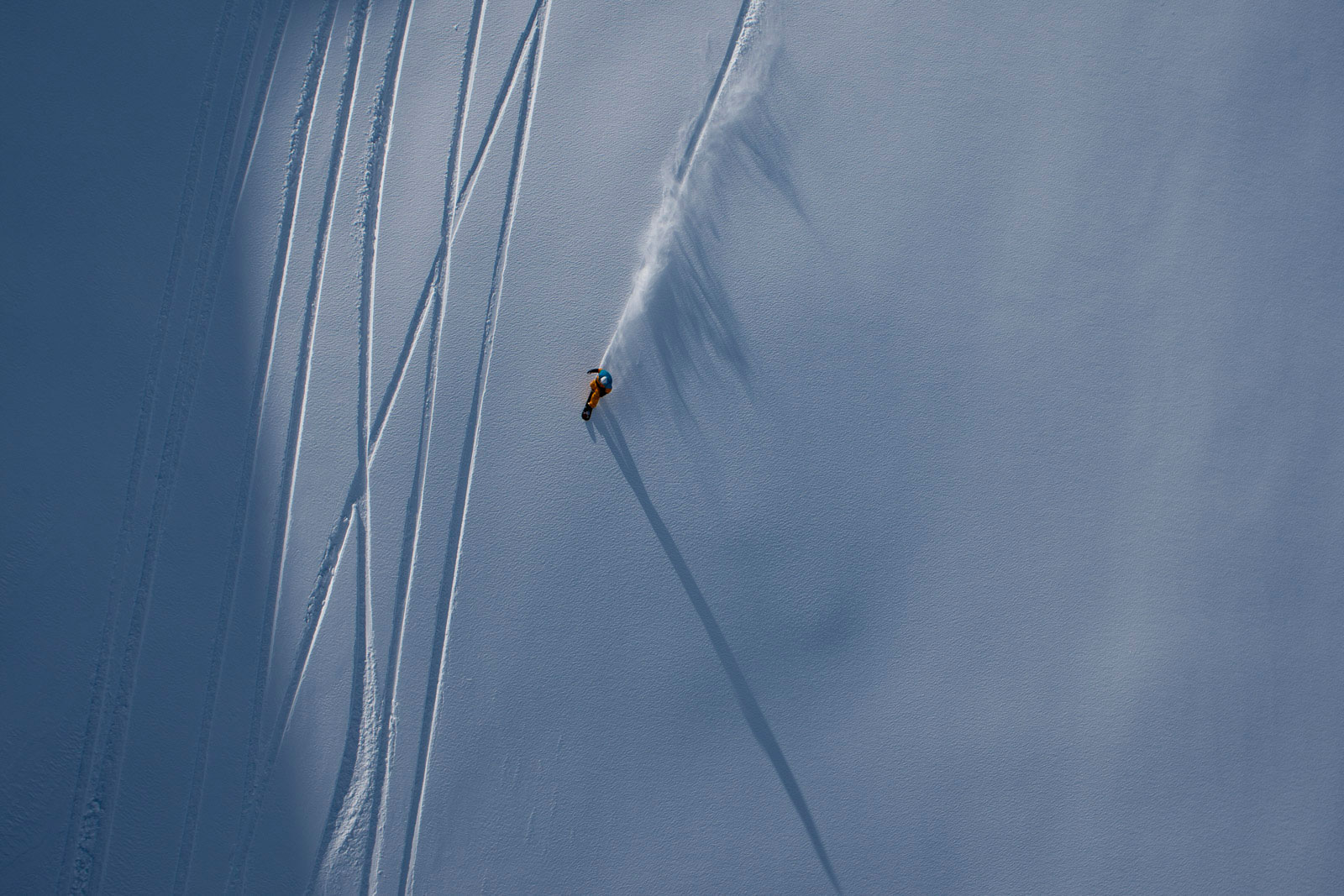On-hill with Dean Blotto Gray
There is something to be said about people who are skilled multi-taskers. Snowboarding and photography are challenging crafts alone, but combining his two passions, Dean Blotto Gray drops in, camera in hand, ready to capture athletes on their down-slope runs. Seemed to match up pretty well with the whole Photo Issue and Snow Issue we have going on this year. (Perhaps you saw a sneak peek of his work in The Photo Issue.) With the help of our friends at MPB, we shipped Blotto some gear, sent him up the mountain, and caught up over a hot toddy back at the lodge to get a glimpse at a day in his life as a snowboarding/photography enthusiast.
You photograph people snowboarding—to do this do you also have to be skilled on skis or a board? Is taking pictures while you are riding something you enjoy?
Dean Blotto Gray: Yes, snowboarding skills are very important for my photography work. I need to safely make my way up and down the mountains, keep up with the crew, access choice angles, and keep developing my photography skills along with the progression of the sport of snowboarding. Under most circumstances, I’m right there with the riders and we’re entering and exiting photo shoot locations on our boards after an initial chairlift, snowmobile, or helicopter approach. My board also makes for a workbench and seating option when I’m posted up on a photo angle for some time.
And taking pictures while I’m riding is so fun! It has kept me involved and enthusiastic about my photography and snowboarding over my whole career, and making powder turns to and from photo locations with my friends is a really nice perk of the job!

Explain to us the scenario you were in when you shot your favorite photograph to date.
DBG: For me, it’s not necessarily all about one favorite image or scenario. There are so many scenarios within snowboarding and snowboarding photography, and each one has aspects that I really enjoy. Every time we enter the backcountry, we’ve created a plan that details the mission objective, what we’re after in terms of photos and video, where and when to be on your photo position, and the most important part—safety protocol. We’re trained and prepared to use safety gear in case of avalanches, what to do if an athlete or crew member is injured, and the best way to extract them from the backcountry quickly. Having your crew come home safe and sound after a day in the mountains is priority number one, the photographs are priority two. I also work on-hill in terrain parks, where the Mountain Patrol is charged with many of the safety protocols and logistics support in case of an incident, so the focus on our shot list in that scenario is much different. So there is a lot that goes into every photo shoot every day we’re out there, and each session takes a different set of inputs and produces something unique and marvelous. It would be really difficult to pin down my favorite photograph to date! I would have an easier time identifying a stand-out image from each session.






How did the MPB gear assist you in your shoot? Is this something you would recommend to other photogs and those just starting out?
DBG: Purchasing camera gear that’s best for your work and your wallet takes research. I wanted to move to a mirrorless camera body and upgrade my lenses before my 2023 winter photo campaign, which was easily achievable through MPB. MPB has over 16,000 pieces of gear, so it’s highly likely that you’ll find what you’re looking for. Since all the gear is used, you spend an average of 35 percent less than buying brand-new gear. Plus, every item is individually photographed and inspected by a product specialist, so you never need to worry about the condition of your gear.
I wanted to find a lens group that could provide plenty of focal length on slope while maintaining image quality and sharpness. The Canon RF collection checked all the boxes with the 100—500mm and 800mm, along with the EF 8-15mm (with the Control Ring Mount Adaptor EF-EOS R). Pairing these lenses with the Canon R5 (with the BG-R10 battery grip) completed the collection.

When shooting snowboarders—are there particular athletes you prefer to shoot and follow? Or do you just shoot what the eye sees?
DBG: A typical assignment in my work features three snowboarders, and I cover everything from portraits to lifestyle to on-hill action. There’s a shot list about half of the time (for a product campaign, for example) while the other fifty percent of my efforts are strictly journalism where I go out and capture the best possible imagery of what’s happening. Event photography generally comes with a long list of assets that need to be captured; things like contest coverage, sponsors, and product placement. Sometimes I’m the only photographer on a site and sometimes I’m working with other photographers or videographers and drone pilots. I don’t prefer any one style of photo shoot over the other, I enjoy the unique challenges every situation presents, and the immensely talented snowboarders and colleagues I’m honored to work with.
The time of day, man-made terrain options, and the riders’ trick choices all influence my composition, aperture, shutter speed, and ISO. Every time a rider drops in I have to be ready with a choice angle complimented by proper camera settings so I can deliver the absolute best possible image in that moment. I really enjoy this process, it keeps me on the move constantly, my brain stays busy, and it’s super rewarding capturing a moment the athlete has worked so hard to accomplish.
Is there a message you want people to take away when viewing your photographs?
DBG: My number one photographic goal is to inspire the viewer to go out and snowboard and take a few photographs of their own. Both activities are so fulfilling, no matter the skill level or how often someone’s schedule allows them to get out there.





If you had to explain to a six-year-old how to drop into a half-pipe on a snowboard, how would you do it?
DBG: Learn to turn, then we’ll get into the halfpipe.

Interested in more about Blotto? Check out his social and website.


